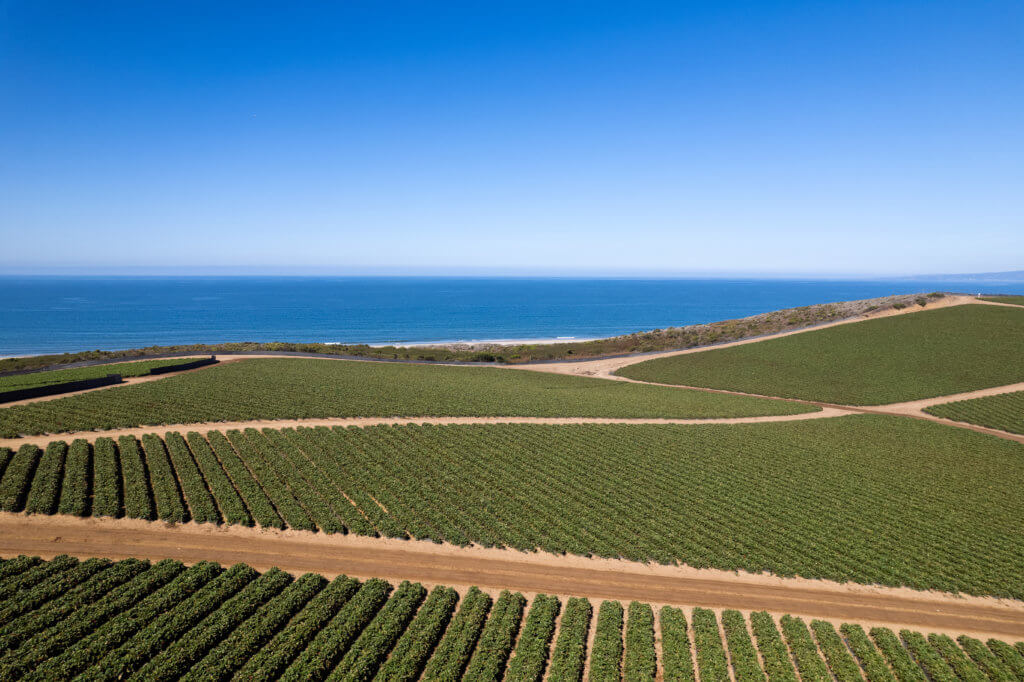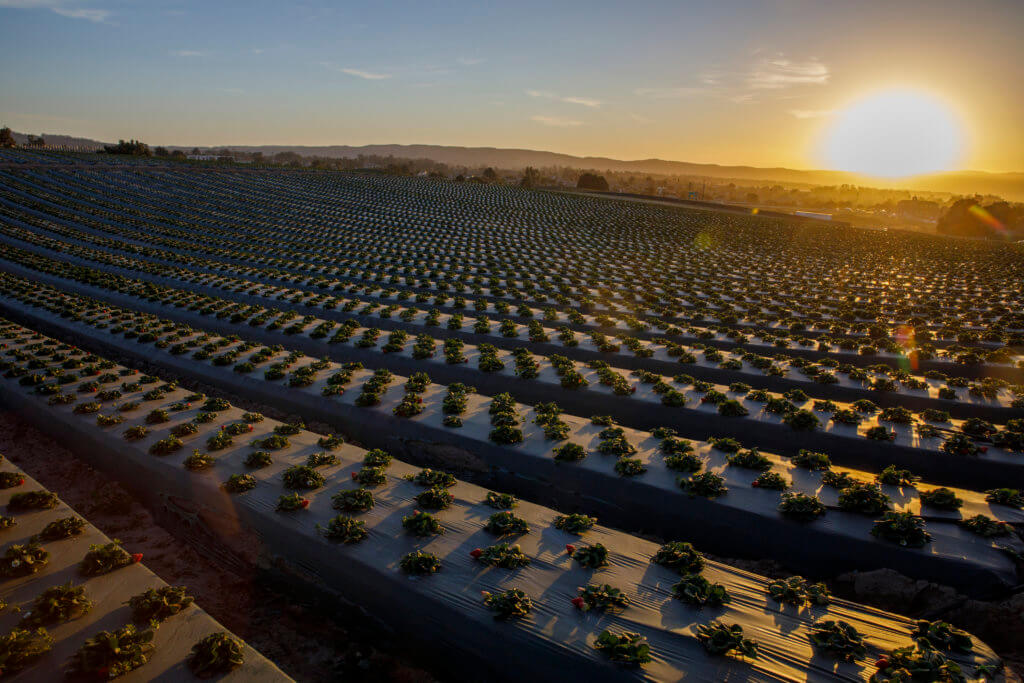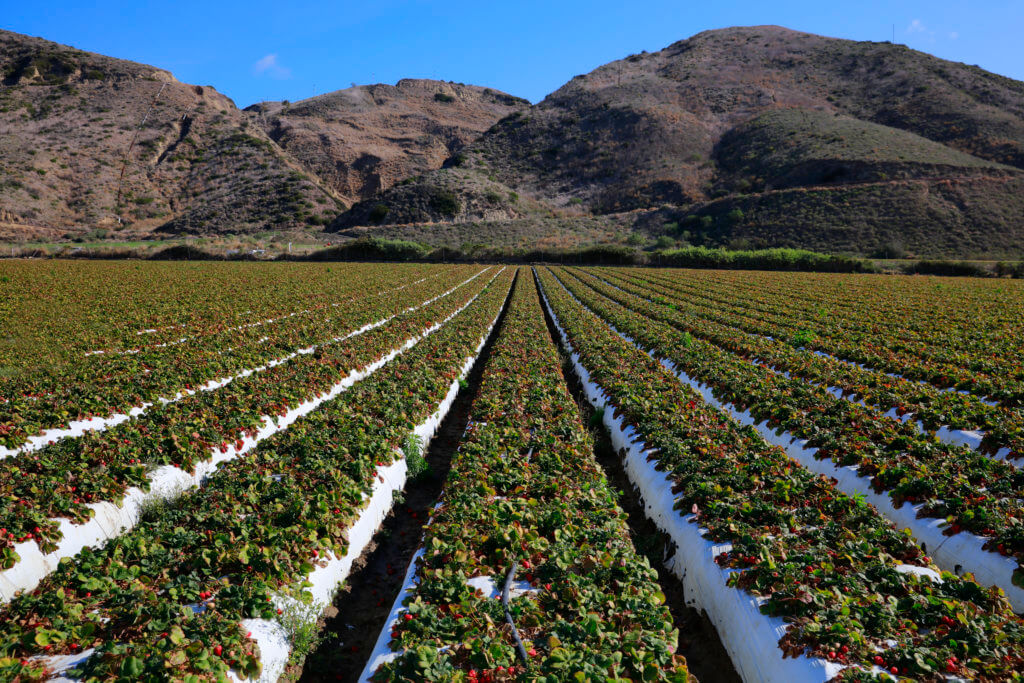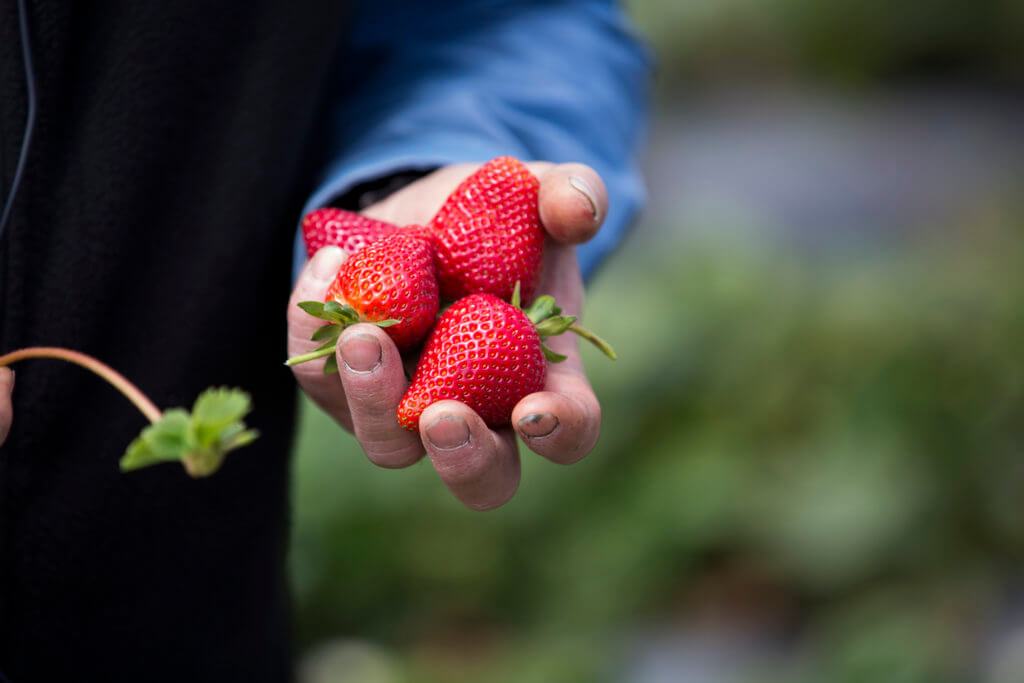Extraordinary care goes into growing California strawberries. All year long, hundreds of strawberry farmers are growing strawberries while strawberry pickers select them by hand across the picturesque coast.
Each berry that’s picked gets packed in a clamshell in the field. From there, the strawberries are taken to a nearby cooler where they are prepared to ship by truck to stores across the country. Watch this video to see the journey all California strawberries go through to get from our farms to your table.
Growing Strawberries in California
There are approximately 300 strawberry growers in California, and most of them are located in five distinct areas of the state:

Watsonville/Salinas

Santa Maria

Oxnard

Orange County/
San Diego
Strawberries are an extremely important crop in the United States, and California leads the way in production with about 88% of the US-grown strawberries coming from this state. In fact, there is somewhere around 34,000 acres all up and down the beautiful California coast dedicated to growing these berries.
Strawberry production in California averages about 50,000 pounds per acre each season. The math obviously changes each year, depending on a wide range of factors, but if we go off of the averages, we can safely estimate that more than 200 million trays of fresh strawberries are harvested in a year. This works out to around 1.8 billion pounds of strawberries.
When Can You Buy California Strawberries
California strawberries can be part of the family table all year long. In winter, the shipments come from southern California, mainly from Oxnard, Orange County, and San Diego. As the weather warms up, production moves north, and farms in Watsonville and Santa Maria begin harvesting and shipping.
This means that the peak season for strawberries runs April through August, when the production in all the different districts begins to overlap and ship roughly 6 to 7 million trays every week. Wow!
Safe and Sustainable Strawberry Growing
Food safety is a top priority for California strawberry farmers, who work hard to deliver safe, wholesome strawberries to the market. The California Strawberry Food Safety Program expands on farming and environmental regulations, and the national Food Safety Modernization Act. The California Strawberry Commission’s cornerstone food safety training program uses engaging methods to orient field crews, supervisors, managers and farmers to practices crucial for the safe handling of strawberries.
California strawberry growers have always been world leaders in sustainable, safe farming, and continue to develop and research new ways to develop agricultural processes that reduce pesticide usage while helping to conserve water and keep the soil healthier.
As research identifies more tools for organic strawberry production, more organic strawberries are grown in California than anywhere in the world. One in four strawberry farmers in California grow both conventional and organic berries.
Strawberry farmers have invested more than $17 million, more than any other farm group in the world, in search for solutions that address problems related to soil-borne disease. These research efforts have been instrumental in the development of new technologies that reduce emissions and amplify the strawberry plants’ inherent ability to resist diseases.
Strawberry farmers are leaders in resource conservation, such as water use, as early adopters of drip irrigation. One acre of strawberries requires less water than an acre of homes in Los Angeles!
Hand Picked and Packed in the Field
All California strawberries are hand-picked to make sure that the quality is as high as can be. This is a critical part of a berry’s journey because strawberries do not continue to ripen after they’re harvested. It’s all dependent on the skilled harvesters who know exactly which berries are ready to pick and pack right in the field.
Strawberries continually produce new fruit throughout their season, so they can be harvested as often as every three days during their peak. And, even though strawberry plants are perennials – i.e., they can produce for more than one season – they’re usually only grown for one season to help prevent diseases.


Getting Strawberries to the Table
Right after they are harvested, the strawberries are taken to a cooling facility where huge fans cool them down and draw out the field heat. Once they’ve cool enough, they’re loaded into refrigerated trucks for same-day shipments for arrival within 3-4 days to grocery stores across the country, even the east coast.
The berries must be kept at 32 degrees Fahrenheit during transportation to make sure they reach their destination anywhere in the country while maintaining the texture and taste that make them perfect for so many recipes.
TERMS AND CONDITIONS • PRIVACY • CONTACT • SCHOLARSHIP PROGRAM • INDUSTRY & TRADE • INDUSTRY NEWS • EN ESPAÑOL • Powered by Team of Horses • ©2010-2024 California Strawberry Commission. All Rights Reserved.
